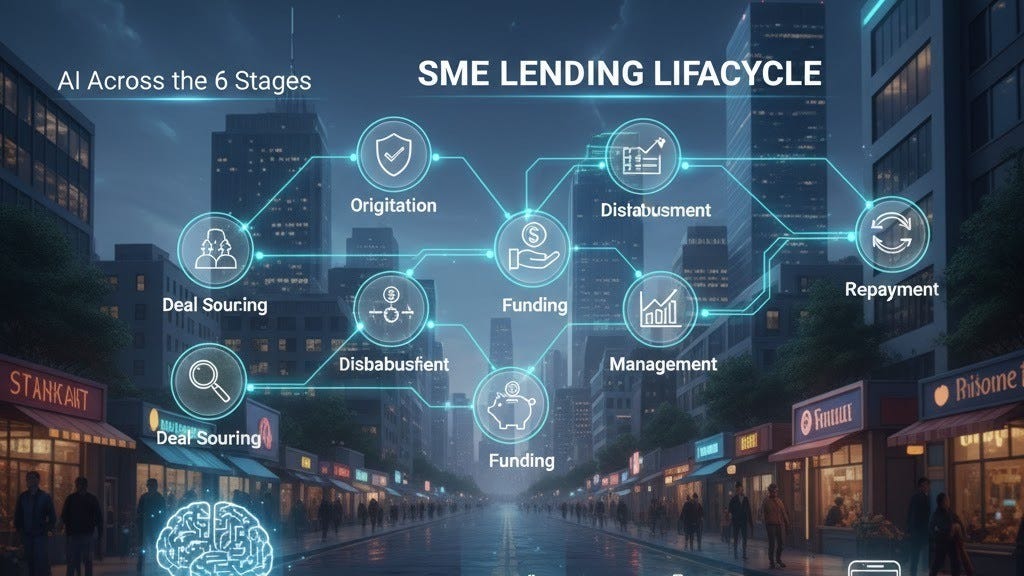The Small and Medium-sized Enterprise (SME) lending market is at a critical inflection point, moving away from slow, manual processes toward a seamless, intelligent future. Financial institutions that strategically adopt Artificial Intelligence (AI) across their operations are best positioned to dominate this evolving landscape, offering faster delivery, better service, and superior risk management.
The Three Defining Shifts in SME Lending
The journey toward an AI-driven lending model is characterized by three fundamental shifts:
1. Technology-Enhanced Process Efficiency AI is replacing manual assessment with near-instantaneous, automated risk calculations. By digitizing KYC, processing physical and digital documents, and analyzing real-time transaction data via APIs, AI systems offer immediate feedback and approval decisions. This dramatically reduces turnaround times and operational costs.
2. The Rise of Private Debt-Funded Loans We are seeing a trend where loans are increasingly funded by private debt investors, similar to venture capital firms, who seek fixed Returns on Investment through interest income. AI helps banks package and offload loan portfolios, optimizing the risk-return profiles for these investors while freeing up balance sheet capacity for the bank.
3. The Power of Embedded Lending Embedded Lending integrates the loan application process directly into the platforms where SMEs conduct business (e.g., e-commerce sites, accounting software, business banking portals). AI powers these integrations by automating eligibility checks and personalizing loan offers at the point of need, making financing a seamless part of the user experience.
AI Across the 6 Stages of the Lending Lifecycle
AI is not a single solution; it’s an end-to-end operational backbone that optimizes every phase of the lending lifecycle:
1. Deal Sourcing: AI-driven analytics proactively identify high-value prospects, recommend tailored products, and predict when an SME is most likely to apply, enabling precision marketing and sales efforts.
2. Origination: AI automates the selection of high-potential applications, digitizes Know Your Customer (KYC), and powers sophisticated AI-driven scoring models that assess credit and risk with higher accuracy than traditional methods.
3. Disbursement: AI optimizes payout processes, ensuring timely transfer of funds. It provides critical insight into expected loan extraction and accurately predicts when the SME will receive the loan amount.
4. Funding: AI streamlines the internal decision-making process for loan funding (e.g., balance sheet, matched deposits) and predicts when approval will be finalized, accelerating the entire disbursement workflow.
5. Management: AI plays a crucial, continuous role in risk mitigation. It constantly monitors borrower performance, reviews compliance with covenants, and provides early warning signals to manage the debt investment effectively.
6. Repayment: AI optimizes the receipt of loan repayments and manages complex, flexible agreements (fixed, early repayment, revolving credit). It accurately forecasts the date the full loan amount will be repaid, improving treasury management.
Conclusion: Embracing the Intelligent Future
The competitive advantage in modern financial services belongs to those who view AI not just as a tool, but as the foundational strategy for growth. By leveraging AI to drive efficiency, attract private capital, and embed services directly into the customer workflow, financial entities can deliver the speed, personalization, and risk control that today’s SMEs demand.

